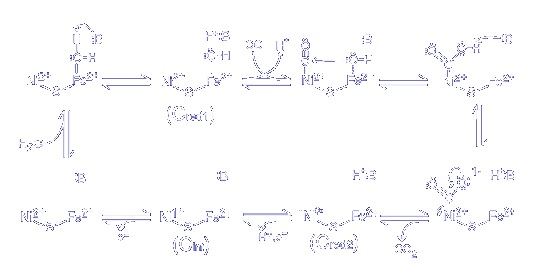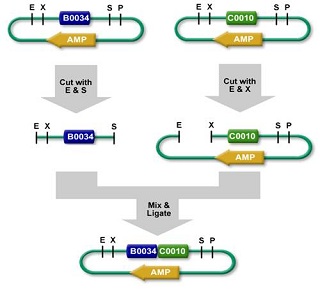Team:METU
From 2012.igem.org
(Prototype team page) |
|||
| Line 1: | Line 1: | ||
| - | + | {|align="justify" | |
| + | | | ||
| + | == '''Biological Carbon monoxide filter:''' == | ||
| - | |||
| - | |||
| - | |||
| - | |||
| - | |||
| - | |||
| - | |||
| - | |||
| - | |||
| - | |||
| - | |||
| - | |||
| - | |||
| - | + | The aim of the Project is to express CODH (Carbon monoxide dehydrogenase) enzyme found in different types of bacteria in cyanobacteria. This enzyme converts CO to CO2 using the reactions below: | |
| + | CO2 + 2H+ + 2e- <-> CO + H2O | ||
| + | Once the CO2 binds, there is a subtle change in the shape of the enzyme that prohibits the CO, when released from the active site, from escaping into the cytoplasm. Being cut off, there is only one escape: move through the molecular tunnel in the enzyme to the A cluster situated by the exit. | ||
| + | |||
| + | One electron comes from the reduced B cluster, and one electron cones from the reduce C cluster itself. | ||
| + | |||
| + | This is a reversible reaction; it's conceivable that the toxic effects of CO can be somewhat neutralized by the cell by turning it into CO2. However, since CO is not common in the environment it is doubtful that the bacterium uses the reversed reaction to save itself. | ||
| + | |||
| + | |||
| + | [[File:metu2012-1.jpg]] | ||
| + | |||
| + | By the way, the name carbon monoxide dehydrogenase comes from the class of enzymes to which this activity belongs. You'll notice there is no hydrogen on CO2 to dehydrogenate, but if you reverse the reaction above, you can see what is dehydrogenated. | ||
| + | |||
| + | CODH is important for maintaining current atmospheric conditions. Microbial metabolisms of CO maintains ambient CO at levels safe for other forms of life | ||
| - | |||
| - | |||
|[[Image:METU_logo.png|200px|right|frame]] | |[[Image:METU_logo.png|200px|right|frame]] | ||
|- | |- | ||
| | | | ||
| - | + | ||
|[[Image:METU_team.png|right|frame|Your team picture]] | |[[Image:METU_team.png|right|frame|Your team picture]] | ||
|- | |- | ||
Revision as of 19:51, 16 July 2012
Biological Carbon monoxide filter:The aim of the Project is to express CODH (Carbon monoxide dehydrogenase) enzyme found in different types of bacteria in cyanobacteria. This enzyme converts CO to CO2 using the reactions below: CO2 + 2H+ + 2e- <-> CO + H2O Once the CO2 binds, there is a subtle change in the shape of the enzyme that prohibits the CO, when released from the active site, from escaping into the cytoplasm. Being cut off, there is only one escape: move through the molecular tunnel in the enzyme to the A cluster situated by the exit. One electron comes from the reduced B cluster, and one electron cones from the reduce C cluster itself. This is a reversible reaction; it's conceivable that the toxic effects of CO can be somewhat neutralized by the cell by turning it into CO2. However, since CO is not common in the environment it is doubtful that the bacterium uses the reversed reaction to save itself. By the way, the name carbon monoxide dehydrogenase comes from the class of enzymes to which this activity belongs. You'll notice there is no hydrogen on CO2 to dehydrogenate, but if you reverse the reaction above, you can see what is dehydrogenated. CODH is important for maintaining current atmospheric conditions. Microbial metabolisms of CO maintains ambient CO at levels safe for other forms of life | |
| Team METU |
| Home | Team | Official Team Profile | Project | Parts Submitted to the Registry | Modeling | Notebook | Safety | Attributions |
|---|
 "
"


